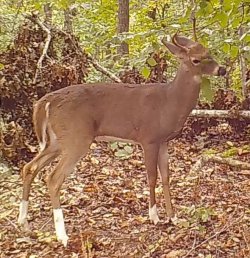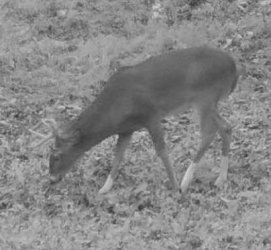In the VAST majority of cases, once a yearling buck has dispersed, he is gone for good.
There is one exceptionally good caveat to this.
IF you can "harvest" a male fawn's mother doe,
ideally between October & January,
perhaps a majority of these male fawns will not disperse from their birth areas.
For those who might think purposefully targeting a fawn's mother doe sounds cruel,
let me add some perspective.
Once a fawn has lost its spots (commonly by late September/early October in much of TN),
it no longer needs nourishment from its mother, and its mother will typically push it away if the fawn attempts to nurse.
In other words, once the spots are gone, the fawns are mostly eating the same food sources as the momma doe. And, they are usually able to escape coyotes as well. If these fawns are orphaned, they will usually "group" up with some other doe families, and learn more "life skills" from them.
Most interesting, orphaned male fawns actually have higher survival rates than non-orphaned ones. Go figure that one.


